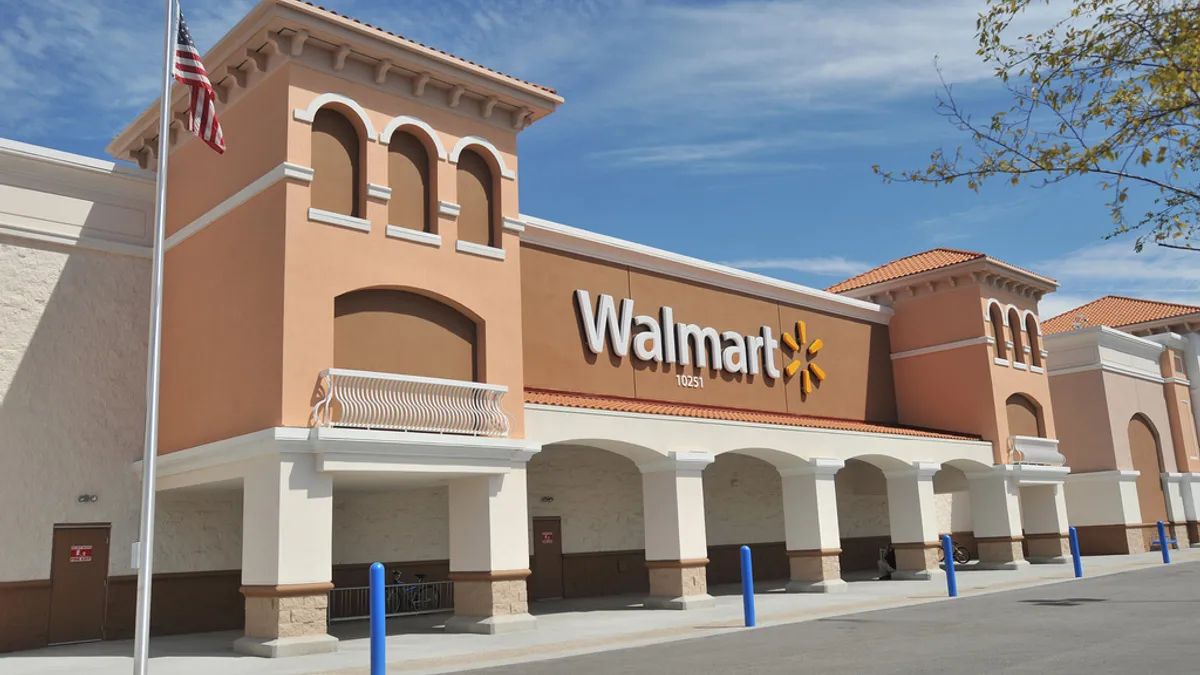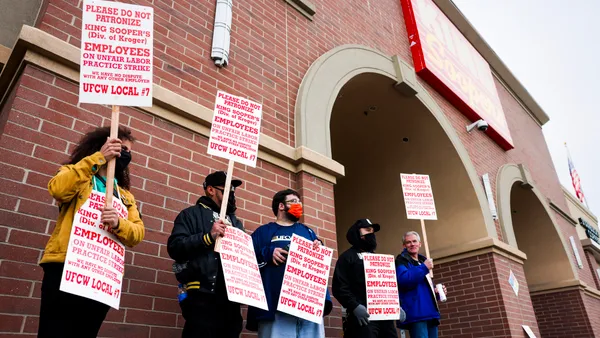Dive Brief:
- Already the world’s biggest retailer, this week Walmart posted its best quarterly sales growth in the grocery category in nine years, proving that it is the giant to beat — not Amazon, according to Bloomberg. Walmart has captured 25% of the $800 billion grocery market, while Amazon has only a 2% share.
- In-store offerings around produce, meat and bakery played a key role in this growth. E-commerce has also ramped up, with Walmart introducing curbside pickup for online grocery orders and the continued rollout of grocery delivery. Walmart also plans to pilot same-day grocery delivery this fall, similar to Amazon’s Prime Now service.
- While the grocery landscape remains competitive, analysts say that Walmart is well-positioned in the space. Grocery made up 56% of Walmart's U.S. sales last year.
Dive Insight:
There’s no question that Walmart is surpassing expectations when it comes to its performance in the grocery space, and its efforts to compete with Amazon are working. While there may be buzz about Amazon and the threat it poses, Walmart is investing, evolving quickly and refusing to back down.
One of the most interesting things about the Walmart-Amazon match-up is that their customer bases overlap. Many people who shop at Walmart also shop at Amazon, and vice versa. When it comes to loyalty, neither has it locked in. Online sales are perhaps Walmart’s weak point compared to Amazon, but Walmart's online sales are increasing.
Walmart continues to make huge strides with grocery delivery, which the company says will be available in 100 markets — or 40% of U.S. households — by the end of the year. That is a tremendous expansion for a company that only delivered in six markets earlier this year. The only other retailer significantly rivaling this effort is Target, which began grocery delivery in more than 50 cities earlier this year and plans to expand to hundreds of cities by the end of 2018.
Amazon Fresh delivers groceries to customers in about 30 cities, while grocery delivery for Whole Foods customers with a Prime membership is available in just 10 markets — though Amazon has plans to continue expansion. Kroger isn’t far behind with its plans for grocery delivery, now available in four cities.
Curbside pickup for online food orders from Walmart is currently available at more than 1,800 stores, more than double what it had one year ago. This rapid expansion may be matched among other grocers who are also working furiously to expand their e-commerce services, especially Kroger. The retailer's ClickList service is currently available at more than 1,000 stores. Meanwhile, Amazon just launched Whole Foods curbside pickup in two cities, and it's available only to Prime members.
Low-cost competitor Aldi, which has been slow to adopt online grocery capabilities, is also now piloting curbside pickup. But Aldi is a bigger threat to Walmart when it comes to price and fresh food offerings — a significant part of Walmart’s recent grocery sales. Aldi has continued to expand its organic and fresh food offerings, and has quickly catapulted upward in the U.S. market. With 15% growth last year, it outpaced not only Walmart but also Kroger, Publix and Safeway. Walmart isn’t the only one that needs to watch out for Aldi, especially if the retailer ups its e-commerce game.
Walmart seems to be doing a lot right these days, with deliberate moves and a smart strategy. While the company should keep tabs on what its competitors are doing, the numbers say a lot, and Walmart would be wise to stay focused on what is working well and how its customers are purchasing.













